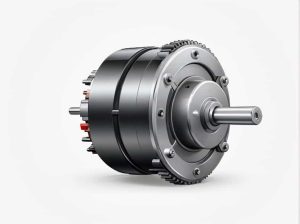An airlock in cold water pipes can be a frustrating problem leading to low water pressure interrupted flow or even a complete blockage. This issue occurs when air bubbles become trapped in the plumbing system preventing water from flowing smoothly.
Understanding the causes of airlocks their effects and how to fix them is essential for homeowners and plumbers. In this topic we will explore the common reasons for airlocks in cold water pipes and the best methods to remove them.
What is an Airlock in Plumbing?
An airlock occurs when air becomes trapped in a section of a pipe creating a barrier that stops water from flowing properly. This is more common in hot water systems but it can also happen in cold water pipes especially in homes with complex plumbing layouts.
Signs of an Airlock in Cold Water Pipes
- No water flow from a faucet despite the main supply being on.
- Intermittent water flow where water comes out in bursts.
- Gurgling sounds in the pipes.
- Reduced water pressure in one or more taps.
If you experience any of these issues it is likely that air is trapped in your cold water pipes.
Common Causes of Airlocks in Cold Water Pipes
There are several reasons why airlocks occur in cold water plumbing. Below are the most common causes:
1. Recent Plumbing Work or Repairs
If you have recently installed new pipes replaced fixtures or repaired leaks air can get trapped in the system. When water is turned back on some air pockets may remain in the pipes causing an airlock.
2. Sudden Changes in Water Supply
- If there is a temporary shutdown of the water supply (due to maintenance or a water main break) air can enter the pipes when the supply is restored.
- Fluctuations in water pressure can also cause air pockets to form particularly in homes with older plumbing.
3. High Points in the Plumbing System
Air naturally rises to the highest points in a plumbing system. If a pipe has a loop or a section that is positioned higher than the rest air can accumulate there and block the flow of water.
4. Partially Closed Valves or Faulty Faucets
If a valve is not fully open or a faucet is faulty it can create conditions where air is trapped in the pipes instead of escaping naturally.
5. Small Leaks in the Plumbing System
Tiny leaks in pipes or loose connections can allow air to enter the system while preventing it from escaping. These small leaks may not always be visible but they can contribute to repeated airlocks.
6. Low Water Pressure or Gravity-Fed Systems
Homes with gravity-fed cold water systems such as those with tanks in the attic are more likely to experience airlocks. Low pressure makes it difficult for air to escape leading to trapped pockets of air in the pipes.
How to Remove an Airlock from Cold Water Pipes
If you suspect an airlock there are several simple methods to remove it and restore normal water flow.
1. The Simple Tap Method
This is the easiest and most commonly used method to remove airlocks:
- Step 1: Turn on the affected cold water tap fully.
- Step 2: Keep the tap running for a few minutes.
- Step 3: If the airlock is small water pressure may push the air out naturally.
2. The Hosepipe Trick
This method works by using water pressure from another tap to force the trapped air out.
Steps:
- Find two taps – one that is working properly and the one affected by the airlock.
- Attach a hosepipe between the two taps.
- Turn on the working tap first (this will send high-pressure water into the affected pipe).
- Turn on the faulty tap and let the water flow for a few minutes.
- Turn both taps off and remove the hosepipe.
- Test the affected tap – it should now flow properly.
3. Bleeding the Pipes
If the airlock persists you may need to bleed the plumbing system:
- Turn off the water supply at the main valve.
- Open all the taps in your home to let air escape.
- Wait for a few minutes until water starts flowing normally.
- Close all the taps and turn the main supply back on.
4. Checking for Leaks and Blockages
If airlocks frequently occur inspect your plumbing for:
- Small leaks that allow air to enter.
- Clogged pipes that trap air pockets.
- Faulty fixtures that prevent proper water flow.
Repair any leaks or replace damaged fixtures to prevent future airlocks.
5. Installing Air Release Valves
In homes with persistent airlock issues installing an automatic air release valve can help. These valves are designed to release trapped air from the system without manual intervention.
How to Prevent Airlocks in Cold Water Pipes
While airlocks can be fixed it is better to prevent them from occurring in the first place. Here are some useful tips:
1. Ensure Proper Pipe Installation
- Pipes should be properly sloped to allow air to escape.
- Avoid creating high points where air can get trapped.
2. Regularly Check for Leaks
- Inspect your plumbing system every few months for leaks or loose connections.
- Fix minor leaks quickly to prevent air from entering the pipes.
3. Open Valves Slowly After Repairs
- When turning the water supply back on after plumbing work open valves slowly to reduce air buildup.
4. Maintain Good Water Pressure
- Ensure your home’s water pressure is stable.
- If you have a gravity-fed system consider installing a booster pump.
5. Use Air Release Valves
- These can automatically remove trapped air especially in complex plumbing systems.
Airlocks in cold water pipes can be annoying but they are usually easy to fix using simple methods like the hosepipe trick bleeding the system or adjusting water pressure.
By understanding the common causes—such as recent repairs trapped air in high points or low water pressure—you can prevent airlocks from happening frequently.
If airlocks keep occurring checking for leaks installing air release valves and improving plumbing design can help maintain a steady water flow in your home.



